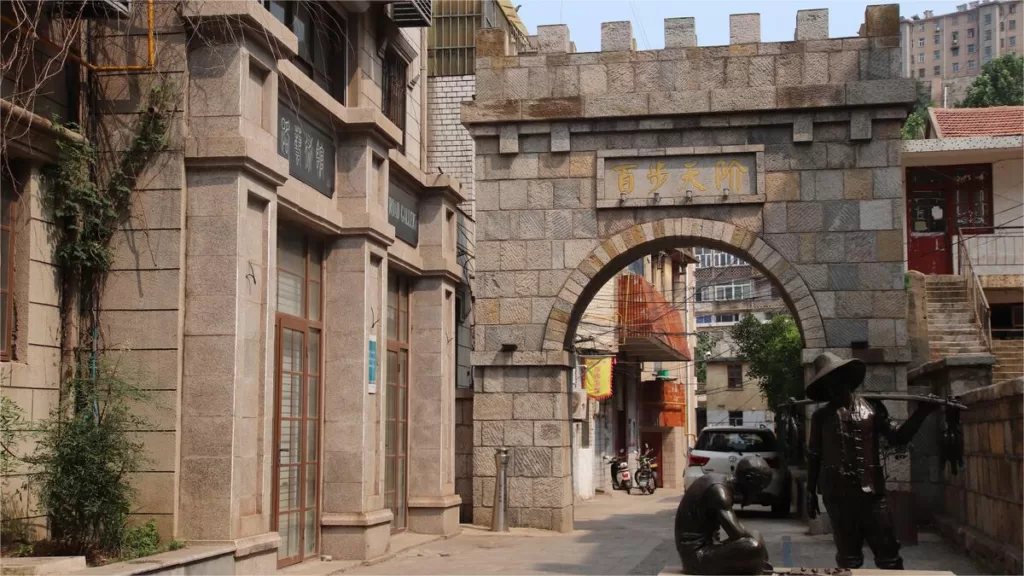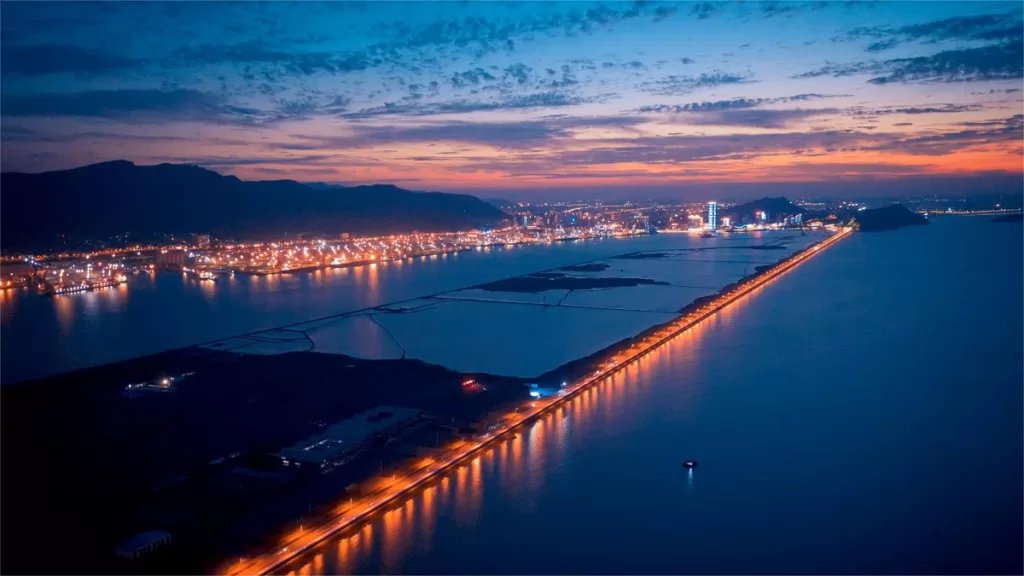Yuntai Mountain in Lianyungang (连云港云台山), also known as the mythical Eastern Sea Fairy Mountain, extends in a northwest-southeast direction, covering an area of 40.78 square kilometers. Originally a series of islands in the Yellow Sea, it became connected to the mainland in the 18th century. Comprising 58 peaks, including Yunsan, Weipin, Weijian, Lüduan, and Sucheng, the mountain range is anchored by its main peak, Dawaijian, standing at an elevation of 605.4 meters, making it the second-highest peak in Jiangsu Province.
From the summit of Yuntai Mountain, visitors can marvel at the panoramic views of the Eastern Grand Port, the connecting East-West Islands, the eastern urban area, the undulating mountain ranges, and the vast expanse of the sea. This vantage point offers a sense of the majestic expanses of the world and the breathtaking grandeur of mountains and seas. The marine ecosystem around Yuntai Mountain is rich, boasting a variety of plant species and vegetation types, with 1,280 species from 642 genera across 164 families, making it a beloved destination for nature enthusiasts and tourists alike.
Table of Contents
- Basic Information
- Location and Transportation
- Highlights of Yuntai Mountain
- Vlog about Yuntai Mountain
- Useful Tips Summarized from Reviews
- Attractions near Yuntai Mountain
Basic Information
| Estimated Length of Tour | Half a day |
| Ticket Price | 80 RMB (20th April – 20th October) 60 RMB (21st October – 19th April) |
| Shuttle Bus | One-Way: 20 RMB Round: 40 RMB |
| Opening Hours | 8.30 – 17.30; Last admission: 16.30 |
| Telephone Number | 0086-0518-82202297 |
Location and Transportation
Yuntai Mountain is situated in the Lianyungang City, specifically within the Lianyun District’s Sucheng Street in Jiangsu Province, China. Renowned as a prominent coastal tourist destination, Yuntai Mountain attracts visitors with its breathtaking natural scenery, cultural sites, and historical significance.
To get there, you can take bus 34, 35, Tourist Line 11, or Tourist Line 7 and get off at Yuntai Mountain on the Sea Scenic Area Stop (海上云台山景区站).
Highlights of Yuntai Mountain
Wanshou Valley
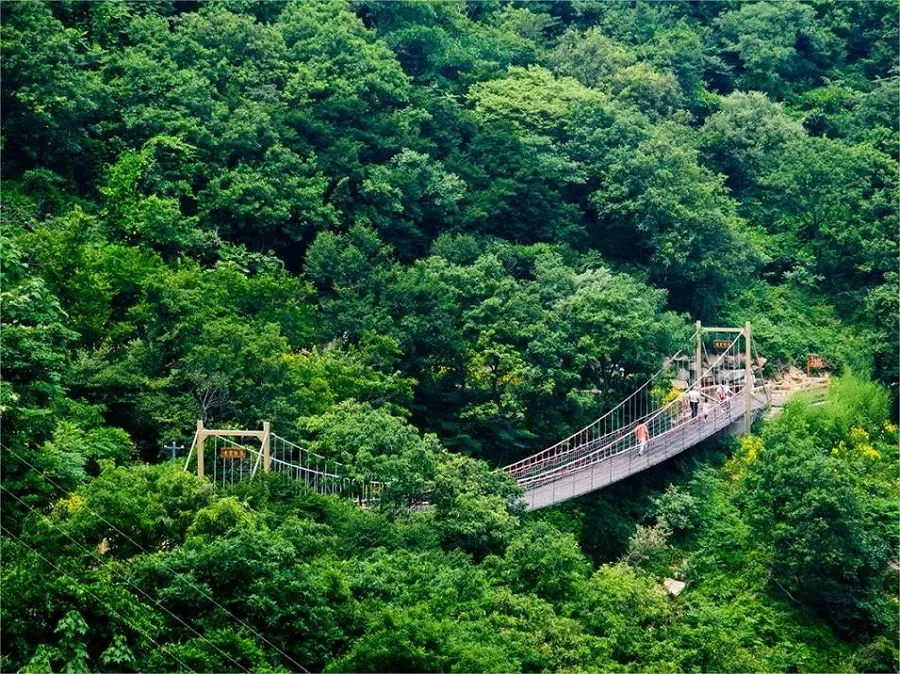
Wanshou Valley, a deep and rugged canyon stretching approximately 2 kilometers, derives its name from Wanshou Mountain located to the south of the gorge. The valley features sheer cliffs, flowing azure waters, melodious bird songs, fresh air, pleasant climate, and pristine ecology. Notable natural landscapes within the valley include Jiu Shou Jing Tan (Nine Longevity Mirror Pool), Dao Ya (Overhanging Cliff), Fo Guang Ya (Buddha Light Cliff), and Mu Fo Tai (Bathing Buddha Platform). The combination of green mountains, clear waters, pathways, secluded valleys, ancient trees, and unique flowers creates a picturesque scenery, making it an ideal destination for exploring and escaping the summer heat.
Yuntai Stone Forest
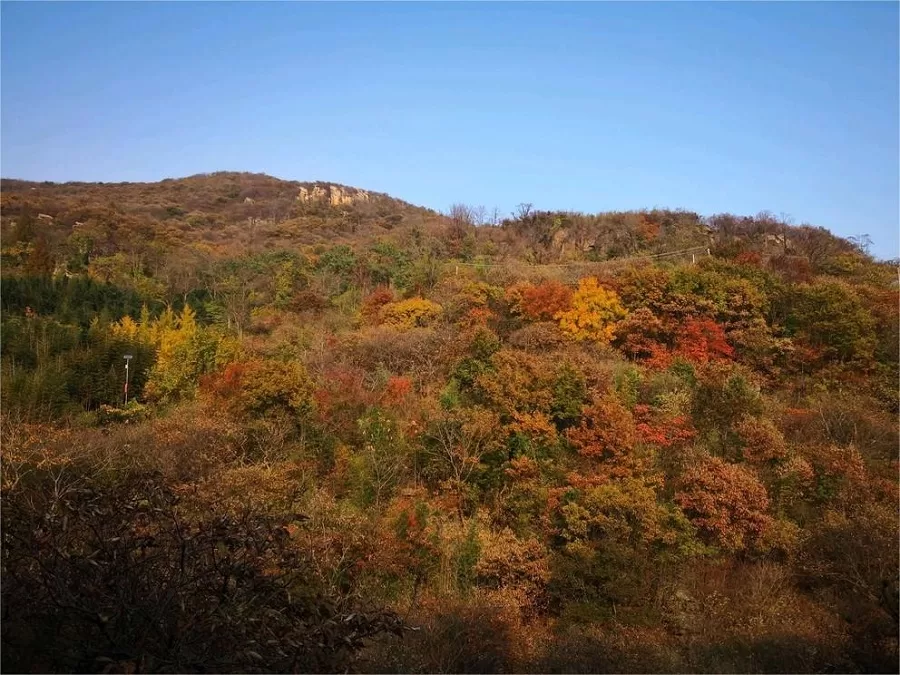
Covering an area of 300 acres, the Yuntai Stone Forest is a stunning landscape where peculiar stones stand tall in various shapes and sizes. Noteworthy rock formations include the “Ten Thousand Scrolls of Sutra Stone,” “Thunderstruck Stone,” “Immortal Peach Stone,” “Reclining Buddha Stone,” “Avalokiteshvara Stone,” “Reclining Tiger Stone,” “Divine Turtle Stone,” “Arhat Cave,” and “Listening to Sutras Platform.” The lifelike and vivid appearance of these natural sculptures showcases the awe-inspiring craftsmanship of nature.
Amidst these peculiar stones, the region hosts the largest native Catalpa tree forest in East China, with trees over a hundred years old, towering and casting shade. During the flowering season, the area transforms into a sea of blossoms, creating a scenic route of 500 meters that meanders through secluded paths, winding peaks, and beautiful stone formations.
Wudao Temple
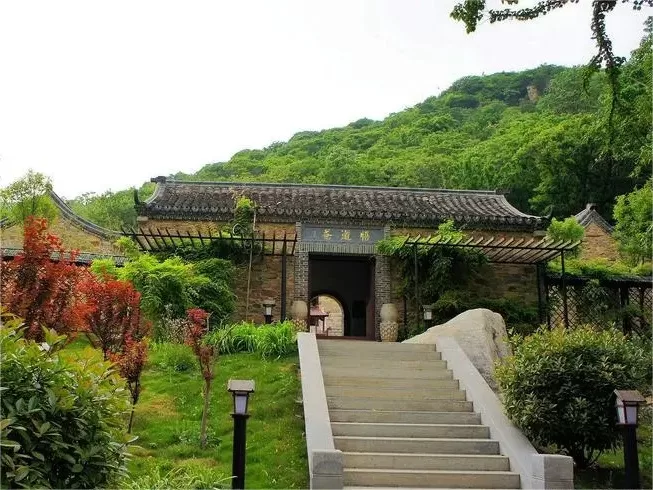
Wudao Temple, also known as Sanjiao Temple, is nestled in the central part of Huangmao Peak, north of Yuntai Mountain, at an altitude of 323 meters. With roots dating back to the Tang and Song dynasties, Wudao Temple was officially constructed in the 42nd year of the Ming Wanli era (1614) and underwent reconstruction in the 12th year of the Qing Shunzhi era (1655). Unfortunately, during the Japanese invasion in 1938, the temple suffered severe damage from bombings, leaving only a few wall foundations, including the mountain gate, main hall, and central hall. The surroundings of the Wudao Temple site are enveloped in lush trees, bamboo groves, and flowing springs, creating an exceptionally tranquil environment. It stands out as one of the premium attractions in the Yuntai Mountain scenic area, boasting rich historical significance, cultural depth, and environmental value.
Faqi Temple
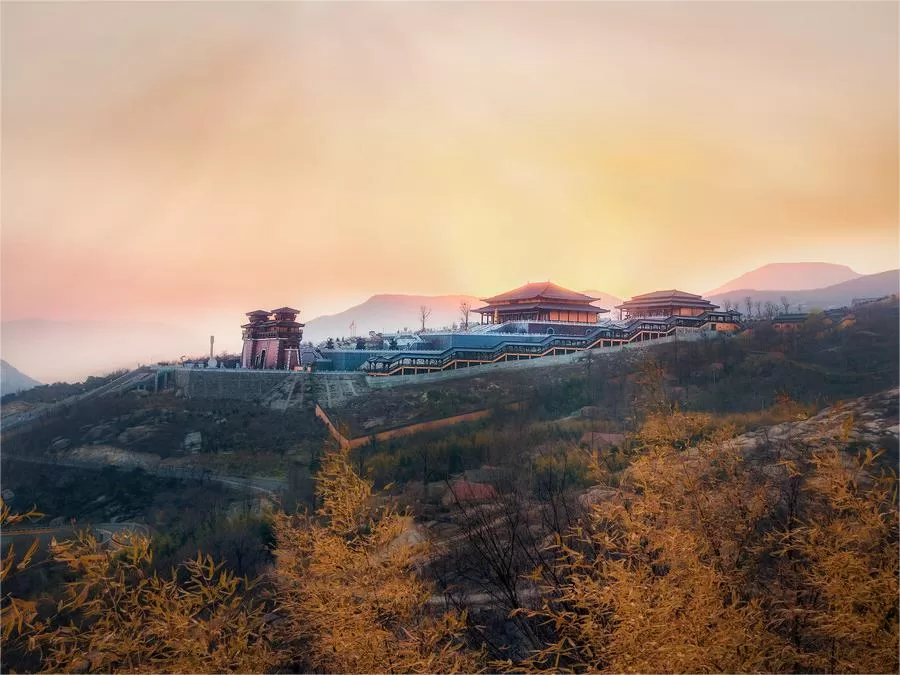
Faqi Temple derives its name from the meaning “the origin of Buddhist teachings.” The temple’s origins trace back to the Han Dynasty, and it boasts a history of over 1,900 years. Initially, during the Han Dynasty, monks from the Kangju Kingdom in the Western Regions translated scriptures and propagated Buddhism here. In the Qing Dynasty, Faqi Temple expanded to include 24 courtyards, housing over 300 monks. The temple complex comprised structures such as the main hall, central hall, Hall of Heavenly Kings, Pure Land Pavilion, Maitreya Hall, Scripture Repository, Dharma Hall, Abbot’s Room, Ancestral Hall, warehouse, and over 200 dormitories. It gained fame for its grandeur and became a cultural hub for Buddhism in the northern Jiangsu and southern Shandong regions.
Throughout its nearly 1,900-year history, Faqi Temple played a unique role in facilitating cultural exchanges among China, Japan, and Korea. Japanese Buddhist monk Ennin left his mark here, and Silla people considered the location of Faqi Temple in Sucheng as their second home. Notably, Korean national hero Zhang Baogao started his journey here, adding to the temple’s significance in the shared history of these three countries.
Vlog about Yuntai Mountain
Useful Tips Summarized from Reviews
Scenic Spots: Upon reaching the mountain top, you’ll encounter the “Yunxiaotian” (One-line Sky) observation deck, offering stunning views of the harbor below.
Shuttle Service: Consider purchasing tickets for the shuttle service, priced at 20 yuan for a one-way trip or 40 yuan for a round trip per person. This option can save you a significant amount of time. The shuttle makes several temporary stops along the way, allowing passengers to embark or disembark as needed.
Facilities at the Visitor Center: The visitor center provides convenient amenities. Both the first and second floors have restroom facilities. Adjacent to the ticket office on the first floor, there is a luggage storage area available for visitors. On the second floor, you’ll find a restaurant and supermarket, providing opportunities to purchase food and supplies for your journey.



